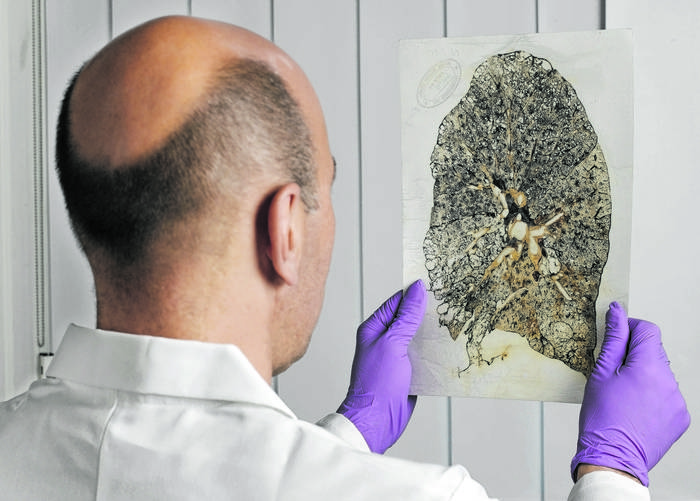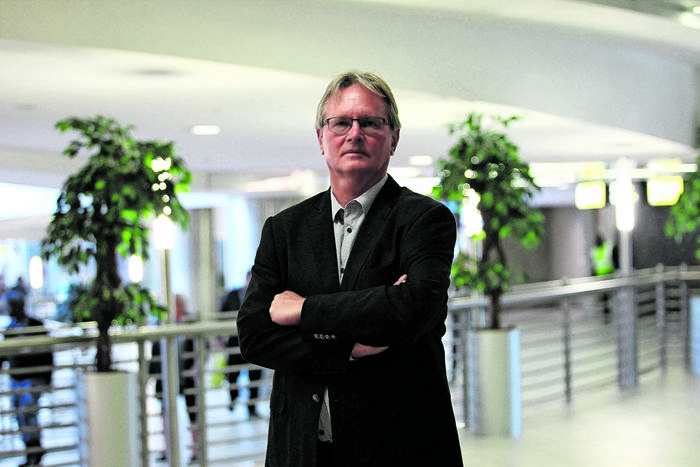Working together, governments, the private sector and regional bodies can solve the infrastructure problems hobbing the growth of the mining sector in Africa. Photo by Emmanuel Croset/AFP
Mine workers and their families have launched a class action suit against international and local mining companies in the Johannesburg high court to claim damages incurred after they contracted a lung disease.
The application aims to sue mining companies for damages for workers and their families who have suffered from the consequences of lung disease dating back to 1965. The respondents in the matter are South32 SA Holdings Ltd, South32 Coal SA Ltd, BHP Billiton PLC Inc and Seriti Power.
The 17 miners and their families are being assisted by the Southern African Catholics Bishops Conference (SACBC) and public interest law firm Richard Spoor Inc Attorneys subsequently took up their case.
The director of the SACBC’s Justice and Peace Commission, Father Stan Muyebe, said miners had approached the church almost five years ago, already aware of the settlements other miners had reached after contracting the lung disease silicosis in gold mines and those compensated by Swiss mining company Becon in 2014 after becoming ill as a result of exposure to asbestos in Danielskuil and Kuruman in the Northern Cape.
“On our part as the church our interest is with people who are forgotten on the margins of society,” he said.
“We have a strong culture of labour unions in the country but when ex-miners are no longer working they no longer fall under the protection of the trade unions and in some way they are forgotten.
The SACBC commission travelled to Mpumalanga, KwaZulu-Natal and Limpopo to assess the scale of the problem and “got a sense there is a huge number of sick people who work in coal mines,” said Muyebe.
“We are aware there are more who are sick who will benefit and the beauty of the class action is it will extend to those who are affected by this even if they haven’t interacted with us,” he added.
In court papers filed recently to apply for the certification of a civil class action damages suit against the mining firms, Spoor argues that the application aims “to redress a historical and ongoing injustice: the burden of disease that coal mine workers, their families and communities have borne, and continue to bear, as a result of harmful exposure to coal mine dust on South Africa’s coal mines”.
 Pathologist Dr J C Wagner looks at a lung blackened by coal dust.(Photo by SSPL/Getty Images)
Pathologist Dr J C Wagner looks at a lung blackened by coal dust.(Photo by SSPL/Getty Images)
The application aims to sue the mining companies for damages for workers and their families who have suffered from the consequences of lung disease dating back to 1965.
“South Africa’s coal mines have been a source of enormous wealth for more than a century. But extracting that wealth has come at the devastating cost of coal mine dust lung disease, borne by mineworkers and their families, without adequate recognition or compensation. Coal mine dust is one of the principal occupational hazards to which coal mine workers are exposed,” Spoor said.
Coal mine dust is generated in the course of mining operations through blasting, drilling, loading, crushing, pulverising, the excavation of coal seams and handling of coal, in both underground and surface coal mines.
Carbon compounds are commonly found together with crystalline silica, typically in the form of quartz, in the rock surrounding the coal seams and in the coal itself. The dust is also mixed with diesel particulates and stone dusts such as crushed limestone, which is used in the coal mining environment.
“Coal mine dust results in certain chronic lung diseases collectively known as coal mine dust lung disease (CMDLD), including the following two main types of disease, which are relevant to this application: pneumoconiosis, and chronic obstructive pulmonary disease (COPD),” Spoor said.
“This burden of coal mine dust lung disease has been borne by those who can least afford it, and who have historically been excluded from legal redress because of their vulnerable and marginalised position in society. This is especially so for black and coloured mineworkers who suffered the dehumanising impact of systemic and institutionalised racism under apartheid.
“That racism informed the operations and occupational health systems on South Africa’s coal mines. The migrant labour system also ensured that the costs of CMDLD were kept hidden and externalised away from the mining industry, to be borne by black and coloured mineworkers, their families and rural communities.
“The applicants seek damages for this burden of disease through a class action against the respondent companies who owned coal mines, employed mineworkers and/or were parent companies of a subsidiary company that owned a coal mine or employed mineworkers.”
Spoor said all of the coal mineworkers in the application believe that they have suffered a lung function impairment as a consequence of their exposure to dust in or on the respondents’ coal mines.
“In the majority of cases, for want of resources and access to an appropriate medical facility and medical expertise, the coal mine workers previously have not obtained any formal medical diagnosis to confirm their belief that they have in fact suffered an injury to their respiratory system. Most class representatives only received a formal medical diagnosis when tested by our medical expert.”
He said the dependents of deceased coal mine workers had told him that they believed their breadwinners died as a result of suffering a lung function impairment as a result of their exposure to mine dust.
Spoor said he had consulted medical experts including Professor David Rees, chair of the Medical Reviewing Authority for Occupational Diseases, Professor Rajen Naidoo, the head of occupational and environmental health in the School of Nursing and Public Health at the University of KwaZulu-Natal and Dr James te Water Naudé, a public health medicine specialist and medical manager of the Asbestos Relief Trust.
According to research cited in the court papers, South Africa-specific data demonstrates that there is a direct relationship between exposure to coal mine dust and mineworkers’ contraction of pneumoconiosis and COPD.
 Rights lawyer Richard Spoor is assisting coal miners with their class action. (Gallo Images / Sunday Times / Thapelo Morebudi)
Rights lawyer Richard Spoor is assisting coal miners with their class action. (Gallo Images / Sunday Times / Thapelo Morebudi)
A 2005 study of about 900 current and former coal mine workers in Mpumalanga found there was a dose-related decline in lung function linked to coal mine dust exposure. A higher cumulative exposure to coal mine dust was associated with lower lung function in coal mine workers.
A study drawing on data from the pathology automation database over the period 1975 to 2014 found that coal mining was associated with increased risks of COPD, specifically emphysema.
It concluded that coal mineworkers in South Africa were exposed to high dust concentrations and more damaging components compared with mineworkers of other commodities. A further study of 728 underground coal mine workers in 2021 found that 21 out of 28 groups experienced exposure to coal mine dust in excess of the statutory occupational exposure limits.
Research assessing developments in providing compensation for occupational lung disease contracted in South African mines found that by the end of 2017, 111 166 mineworkers had received compensation. Of these, 55 864 were for permanent lung impairment. Some 107 714 compensable claims remained unpaid. The study considered a database with compensable disease claims from more than 200 000 mineworkers, a medical assessment database of 400 000 health records, and an employment database of 1.6 million mineworkers.
Despite the enormous wealth produced by the country’s extensive mineral resources, decades of colonialism, apartheid and challenges in the post-apartheid era have left hundreds of thousands of mineworkers with occupational lung disease and the associated economic and social consequences, the report said.
South32 SA Holdings Ltd, South32 Coal SA Ltd, BHP Billiton PLC Inc and Seriti Power had not responded to requests for comment at the time of publication.
Muyebe remains hopeful that the mining companies will reach a settlement agreement with workers rather than participate in a protracted court battle.
“We know business is about returns but at the same time there is a responsibility to look at the triple returns for investors and shareholders, but [there is] also [a responsibility] to look at the social and environmental impact. We are hoping the class action will not protracted for five or 10 years to the detriment of sick workers,” he said.
“We are hoping the mining companies will find it in their hearts to explore a settlement and take the example of the gold sector that came to the conclusion it would be in the best interest of the companies and the miners to explore a settlement.”